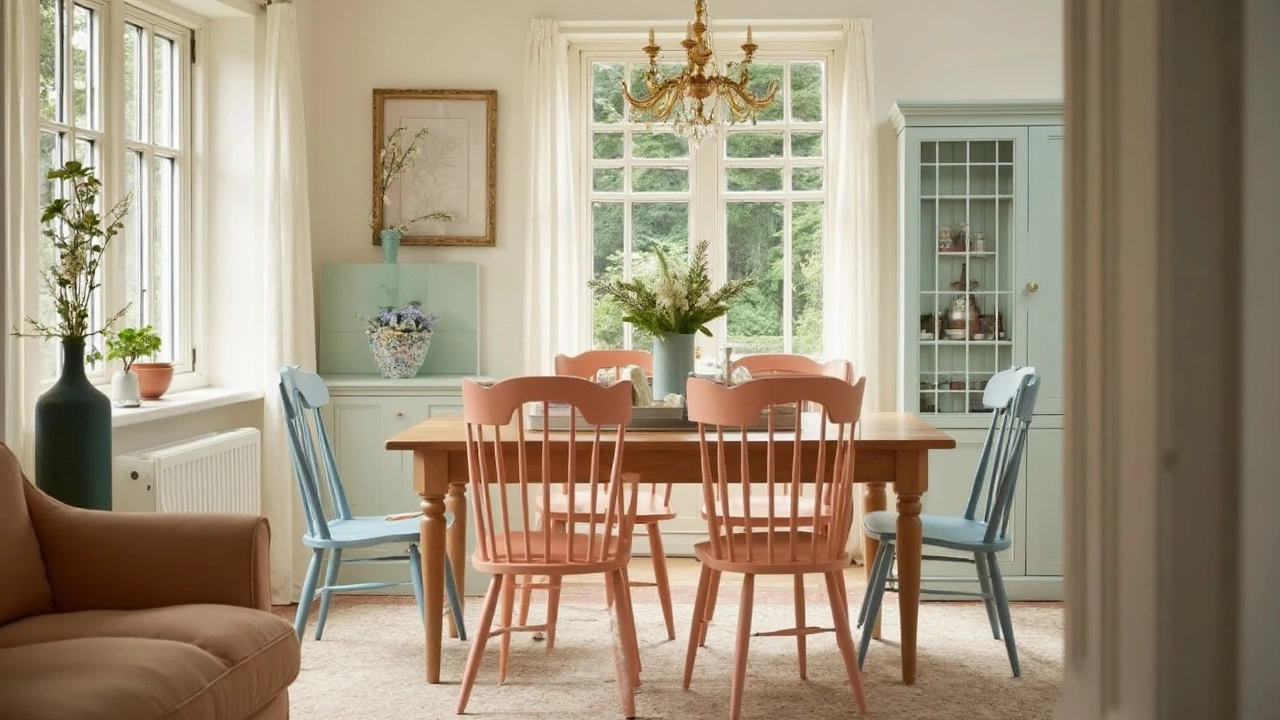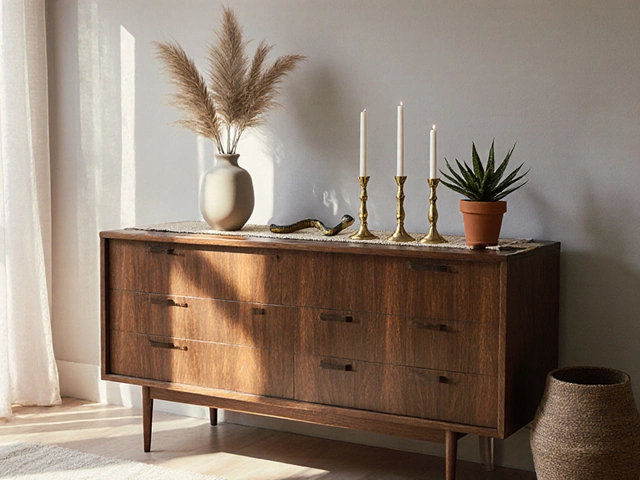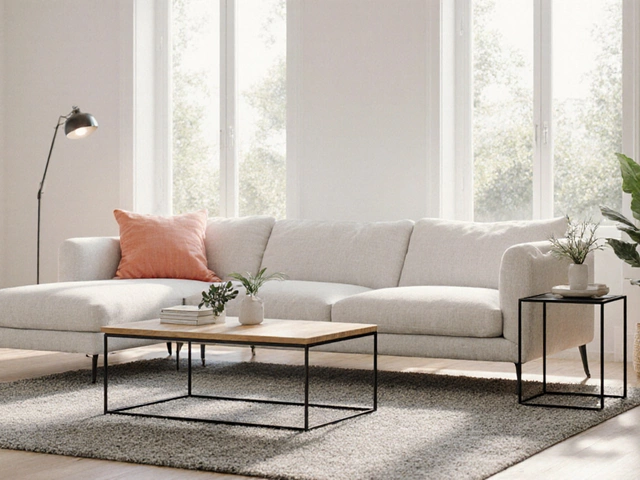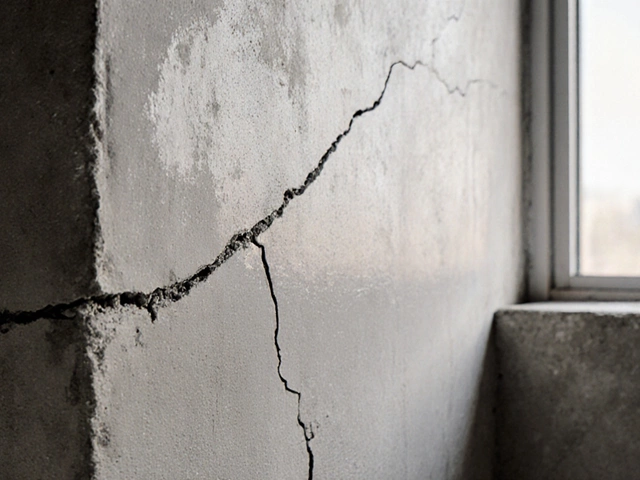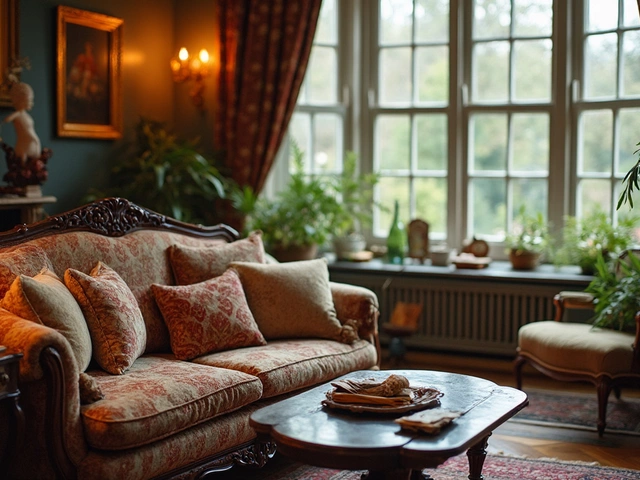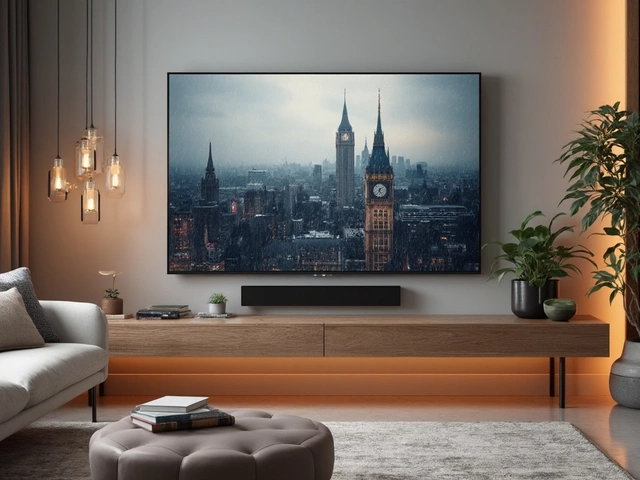You’ve probably seen a Cinderella chair at some point—even if you didn’t know the name. It isn’t a fairytale prop but a real piece of furniture that’s taking over stylish dining rooms. The Cinderella chair stands out with its curvy back, usually a bit of a 'waist' in the middle, and that instantly-recognizable balloon shape. It’s comfy for long meals, but it also looks fancier than your average kitchen seat.
What really sets a Cinderella chair apart is how it gives your dining area that ‘put-together’ look without being stiff or formal. You’ll spot them in everything from casual kitchens to fancy home dining rooms, and they’re as good at hosting Sunday dinner as they are looking cool at a desk or in the corner by a window. If you’re after a chair that actually makes you want to sit and relax, but don’t want the typical boxy wood look, the Cinderella chair is worth a closer look.
- Cinderella Chair: What’s In a Name?
- A Quick History: Where Did the Cinderella Chair Come From?
- Why People Love Cinderella Chairs
- How to Spot a Cinderella Chair
- Best Ways to Use Cinderella Chairs at Home
- Keeping Your Cinderella Chair Looking Good
Cinderella Chair: What’s In a Name?
The name “Cinderella chair” pops up a lot online and in furniture shops, but it’s not as fancy as it sounds. The nickname actually comes from those classic fairy tale ballroom looks—think swoopy silhouettes, a narrow waist, and a chair back that flares like a princess dress. If you’re searching for that one Cinderella chair to add flair to your space, you’ll know it by its curves and almost magical vibe. Some furniture people also call it a balloon-back or spoon-back chair because of the same shape, but ‘Cinderella’ just stuck because it sounds more fun and memorable.
These chairs aren’t tied to a specific designer or brand. They’re more about the overall shape and how they instantly feel more special than the usual options. The name caught on mainly in North America from around the 1990s, thanks to home magazines showing off these retro-meets-modern looks. They’re especially popular when you want something different from straight-backed, square wooden seats.
Here’s a quick visual rundown of what usually counts as a Cinderella chair:
- Curved back that narrows at the middle, creating an hourglass (or “corset”) look
- Upholstered for comfort, though some wooden versions exist
- Sometimes features button-tufted details or piped edges
- Often found in pastel or neutral tones, but bold colors are on trend now
People love calling these ‘Cinderella’ chairs because, much like in the story, they transform everyday dining rooms into something a little more magical—without needing a fairy godmother.
| Typical Sizes | Materials | Notable Features |
|---|---|---|
| Seat height: 18-20" | Wood, velvet, linen, synthetics | Curved ‘waist’, padded seat, arched back |
A Quick History: Where Did the Cinderella Chair Come From?
The story behind the Cinderella chair is actually pretty straightforward. The original design took root in France, way back in the mid-20th century. In the 1950s and 60s, a bunch of European designers wanted chairs that looked softer and felt more comfortable than stiff, straight-backed options from before. That’s when the distinct curvy, balloon-shaped back of the Cinderella chair started popping up. It got popular in Paris apartments and then spread to the rest of Europe.
The nickname “Cinderella chair” didn’t come from some designer’s love for fairy tales—it came from the chair’s shape. The cinched-in waist and puffy curves sort of mirror Cinderella’s ball gown from those old animated movies. Interior designers picked up on that connection and the term just stuck, even though the chair’s official name is usually something like “balloon back” or “hourglass back.”
By the 1970s, the Cinderella chair made its way to American dining rooms and quickly became a favorite for anyone trying to blend elegance with comfort. These chairs faded a bit in the late ‘90s, as minimalism took over, but in the last few years they’ve made a comeback. People are tired of bland, basic chairs and want that fun, classic vibe again.
| Timeline | Key Moment |
|---|---|
| 1950s-60s | Designers in France introduce the signature shape |
| 1970s | Adopted widely in American homes |
| 1990s | Less common as modern, minimalist styles take over |
| 2020s | Cinderella chair surges back in popularity for dining rooms |
If you walk into a vintage shop or scroll through furniture trends online, you’ll see the Cinderella chair standing out—for both its history and its instantly-recognizable look.
Why People Love Cinderella Chairs
There’s a reason Cinderella chairs keep popping up in home tours and social feeds. First off, they’re way more comfortable than your average hard-backed kitchen chair. The gentle curve in the back makes it easy to lean back and actually stay at the table for another round of coffee or a long chat after dinner. You don’t feel like you’re rushing to stand up as soon as you’re done eating.
They’re also easy to mix in with different dining room styles. Whether you go for a farmhouse vibe or sleek modern look, the Cinderella chair’s shape just works. Plus, manufacturers make them in all sorts of finishes—from classic wood to plush upholstered seats. That means they fit anywhere, from a tiny breakfast nook to a big dining table hosting holidays.
What really hooks people, though, is how these chairs make a room feel more ‘finished.’ That iconic hourglass or balloon-back shape instantly looks more thoughtful and stylish, almost like you had an interior designer help you out. You get all that without having to splurge on super high-end furniture.
- Cinderella chair options don’t just look pretty—they’re built to handle daily life. Sturdy legs and frames mean you’re safe dragging them in and out at mealtime, even if you’ve got kids who aren’t exactly gentle.
- If you like to change things up, swapping in Cinderella chairs around a table is a simple switch-up that brings a whole new vibe to the room.
- Plenty of stores now sell stackable or lightweight Cinderella chairs, so you can move them around without help or stash them when you need extra floor space.
It’s that blend of comfort, looks, and real-life practicality that keeps these chairs at the top of people’s shopping lists for dining room furniture.
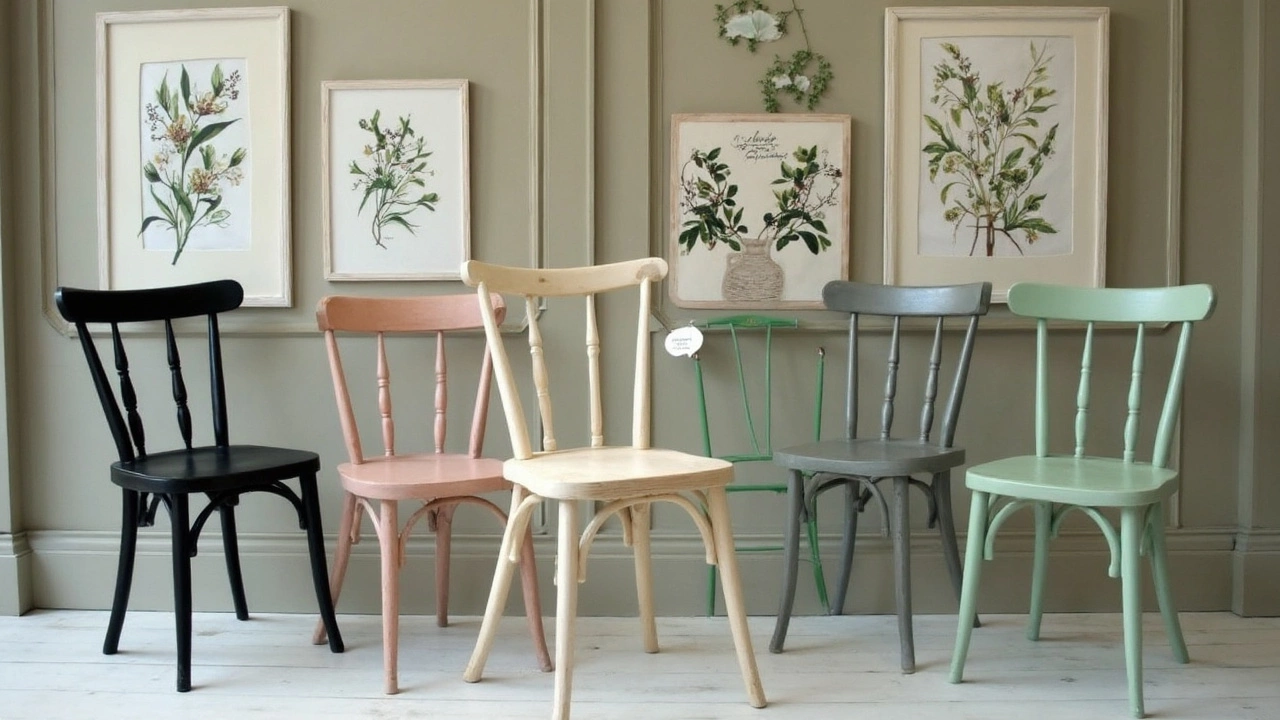
How to Spot a Cinderella Chair
If you’re flipping through catalogs or scrolling social media, the easiest way to spot a Cinderella chair is by its unique silhouette. The main thing people notice is the pronounced curved back—almost like an hourglass. There's a tight curve in the middle, which gives way to a wide, balloon-ish top and a flared bottom near the seat. This isn’t like the thin stick backs you see on Windsor chairs or the super straight lines of modern plastic ones.
Most Cinderella chairs have the following features:
- Cinderella chair design usually means a wooden frame, often painted white or a pastel, though black is common too.
- The backrest is not just rounded—it usually looks like an oval or a big heart, with a skinny waist in the center.
- Legs are typically turned or carved, giving them an elegant but sturdy look. If the legs are super thin or square, it’s probably not a true Cinderella chair.
- You’ll often see little floral or scroll carvings right on top of the backrest, or in the center of the back for a bit of extra flair.
- The seat is often a simple wooden panel, but some versions have light padding or a fabric cushion for extra comfort—think ticking stripes or floral patterns.
Here’s a quick reference table to help you compare typical Cinderella chair details with common dining chair types you might mix them up with:
| Chair Type | Back Shape | Material | Typical Leg Style | Common Colors |
|---|---|---|---|---|
| Cinderella | Curved, hourglass, often carved | Wood (sometimes padded seat) | Turned or carved wood | White, black, pastels |
| Windsor | Thin spindles, rounded top | Wood | Simple round or angled | Natural wood, black |
| Modern Plastic | Straight or simple curve | Plastic, sometimes metal | Straight, sleek | Bright colors, neutrals |
The Cinderella chair is all about that almost ‘dressed-up’ vibe—like something you’d see at a fairytale ball but without going over the top. The design’s been copied since the 19th century, so if you see a chair with these details in thrift stores or your grandma’s dining set, you’re looking at a classic. Whether you go vintage or new, just check for those signature curves and a little carving, and you’re golden.
Best Ways to Use Cinderella Chairs at Home
There are plenty of spots around the house where a Cinderella chair can make a difference. Most people start by lining them up around their main dining table since they’re supportive enough for long dinners or family game nights. They’re also trending as “mix-and-match” chairs—you don’t have to buy a full matching set. Lots of designers like to pair Cinderella chairs with benches or simple wooden chairs to keep things interesting and less predictable.
If you have a breakfast nook or a small kitchen setup, Cinderella chairs fit right in. Their iconic shape somehow makes cramped spaces feel a bit more stylish and inviting. They’re lighter than big upholstered chairs, so it’s easy to move them when you need extra seating. And if you work from home, try pulling one up to your desk. It’s more comfortable than a hard stool, and it looks better on video calls.
Got an empty corner? Plop a Cinderella chair there with a small table or lamp—it instantly becomes a reading spot or a chill space for coffee. Some people even use them in bedrooms as that handy ‘catchall chair’ for laying out tomorrow’s outfit. If you want to get fancy, try a bold fabric or a bright color; these chairs handle statement looks surprisingly well without overwhelming the room.
- Aim for at least two chairs if you want some symmetry, but don’t stress about matching everything.
- Place felt pads on the feet if you’ve got hardwood floors to keep things scratch-free.
- Don’t be afraid to swap in a Cinderella chair as an accent piece away from the table, like beside a dresser or entryway bench.
Bottom line? Cinderella chairs are way more flexible than their classic style suggests. You’ll probably end up moving them around your house just because they work just about anywhere.
Keeping Your Cinderella Chair Looking Good
No one wants their new Cinderella chair getting ruined after a few months of dinners and hangouts. These chairs can be both comfy and good-looking for years, but it does take a little effort to keep them that way. Here’s how you do it without getting stressed out.
First, check what your Cinderella chair is actually made of—some are all wood, some have upholstered seats, and a few come with fancy velvet or faux leather. Your cleaning approach will depend on the material. Most manufacturers will include care directions, but let’s get real: most people throw that tag away after unboxing. So here’s a cheat sheet:
- If it’s wood, dust once a week and wipe with a barely damp cloth. Don’t let water pool on it or you’ll see warping or stains. If you spot scratches, a furniture touch-up pen or even a walnut rubbed on the scratch can help camouflage it.
- For upholstery, vacuum crumbs out of the seams with a soft brush. If there’s a spill, blot (never rub!) with a clean cloth. A 2023 survey from HomeSpruce found that 57% of people forget to spot-treat stains on upholstered dining chairs, so you’re ahead of the curve if you act fast.
- If it’s faux or real leather, wipe it with a damp microfiber cloth and dry right after. Use a conditioner every three months to keep things from cracking.
One big tip: add felt pads to the bottom of chair legs, especially if you have wood or tile floors. Sliding a chair across the floor can easily scratch it up, and nobody wants worn-out flooring before guests even see the seat. If these chairs get heavy use, rotate them around your table so one spot doesn’t get faded or worn out faster than the others.
Here's a quick snapshot of the most common Cinderella chair materials and what works (and totally doesn’t):
| Material | Do | Don't |
|---|---|---|
| Wood | Dust weekly, use mild soap, fix scratches fast | Splash water, use abrasive pads |
| Upholstery | Vacuum crumbs, blot stains, spot-clean ASAP | Use harsh chemicals, let stains set |
| Leather/Faux Leather | Wipe, dry, condition quarterly | Soak, expose to direct sun |
Every now and then, tighten up the chair’s screws or bolts. Loose joints can make chairs wobbly, and ignoring that could actually shorten their life. Treat your Cinderella chairs like you care, and they’ll keep making your dining room look sharp for way longer than you’d think.
